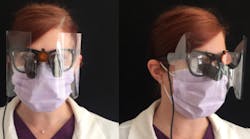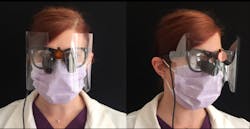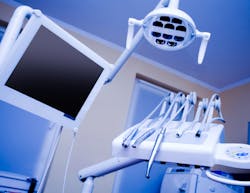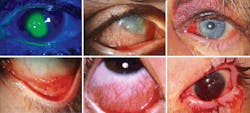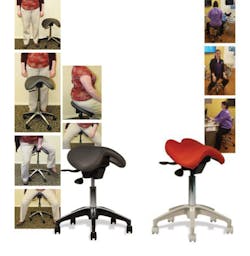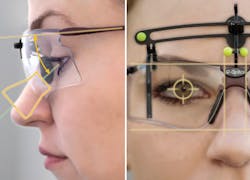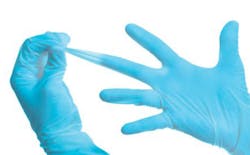What do staph, airborne debris, herpesviruses, tuberculosis, back pain, and hearing loss have in common? You can take measures to protect yourself from all of these by investing in the proper equipment and staying up-to-date on professional guidelines and best practices.
We've rounded up our best articles on products designed for your protection so you can learn what you really need and what you don't, how to shop for it, and how to make sure everything's in proper working order. The occupational hazards of dentistry won't stand a chance against you.
Protect your eyes and your loupes: A shield to change your practice
Pamela Maragliano-Muniz, DMD
Pamela Maragliano-Muniz, DMD, was prevented from wearing loupes twice in her career, and both occasions involved airborne debris. Recently, she tried a product that might have prevented these incidents: a shield for your eyes and your loupes. Read her review.
Personal protective equipment you need to hear about
Judy Bendit, RDH, BS
You don your scrubs, your mask, your gloves, your loupes, your headlight ... and you think you're protecting yourself from the occupational hazards of the dental office. But what about ear plugs? Read about an affordable new option.
Aerosols: It's what you can't see that can hurt you
Laura Emmons, RDH, Cheri Wu, BDSc, RDH, and Tia Shutter
Ultrasonics and air polishers can produce splatter and aerosols that contain saliva, blood, bacteria, and pathogens, posing a risk for the spread of illnesses such as influenza and even tuberculosis. Read this article to learn more about why you need a high-volume evacuation (HVE) device, what to look for when you shop for one, and how you can test an HVE device's efficacy.
My eye's on you: Are dental professionals using safety glasses while rendering care?
Kandyce M. A'See, RDH, MS, and M. Suzanne Mathis, RDH, MS
You're aware that wearing proper eye protection is important in the operatory, but are you actually wearing it? Studies have shown that many clinicians aren’t. If you're among them, you'll probably start wearing it after you read this article.
Protecting dental staff from the most hazardous job in America
Andrew Barrett and John M. McMahon, DDS
A medical-grade air purifier probably isn't the first thing that comes to mind when you think of products that protect you at work every day, but if your office doesn't have one, it's time to get one. Aerosols can remain suspended up to six feet in the air for up to six hours, and clinicians breathe roughly 11,000 liters of indoor air per day. Learn more.
Take a stand on seating: Strategies defuse occupational hazards associated with sedentary positions
Anne Guignon, RDH, MPH, CSP
Think your choice of seating doesn't matter? Think again. Purchasing seating because it's inexpensive or because you've seen it touted on the internet can be risky. The key is to find the right seat design and adjust the device to fit you. Learn how to do that here.
A checklist for shopping for dental loupes
Tricia Osuna, RDH, BSDH, FAADH
Do you know what to look for when shopping for loupes? Tricia Osuna, RDH, BSDH, FAADH, discusses the difference between through-the-lens and flip-up styles, how to choose frames that work for you, as well as other things you need to consider for this purchasing decision, such as resolution and warranty. See her tips.
Perfect fit for hand health: The selection of gloves should be based on comfort and durability too
Anne Guignon, RDH, MPH, CSP
Do you have a say in the gloves you wear every day? Since you wear them for hours each day, you should. Find out how you can choose gloves that fit you well and feel comfortable—and why it matters—in this article from Anne Guignon, RDH, MPH, CSP.
Product spotlight: The SafeMask line of dental face masks
Chris Salierno, DDS
Dental Economics Chief Editor Chris Salierno, DDS, asked Jason Ludvig, brand manager for Medicom, about what dentists and dental hygienists often do wrong when wearing face masks. Are you making any of these common mistakes?
